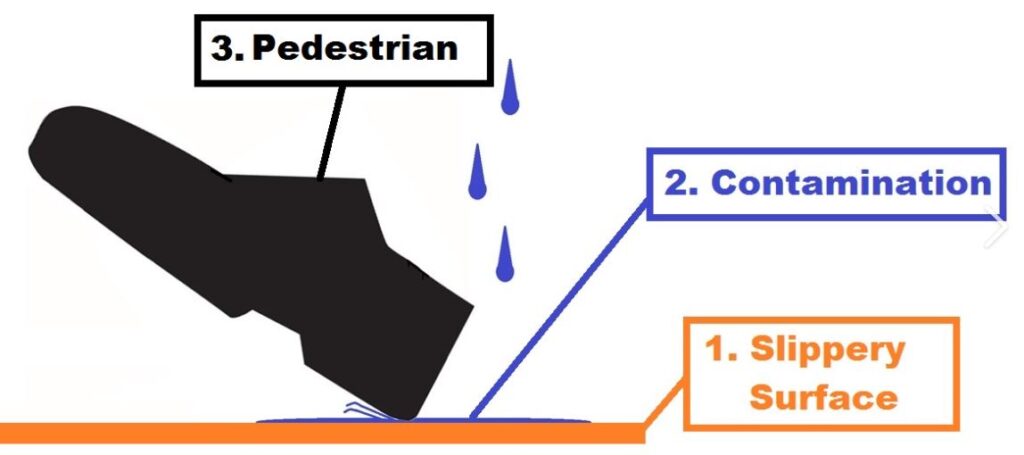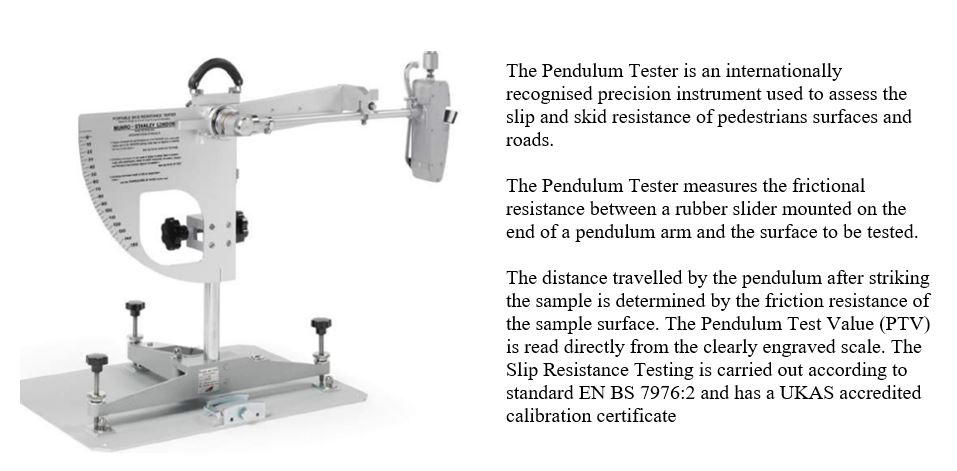What is Slip Resistance Testing?
Slip Resistance Testing is carried out using the Pendulum Tester method. The Pendulum Tester measures the slip resistance of a floor surface by replicating the interaction between a moving pedestrian heel and a static surface. The amount of friction is given a pendulum test value indicating either a low, moderate or high slip potential based on the Pendulum Test Value (PTV) value noted.
Why conduct Slip Resistance Testing?
Slips and trips are the most common cause of injury at work. According to the Health & Safety Authority (HSA)…..
- Every working day in Ireland more than three people are hurt in work slips (excluding trips and falls)
- 23% of those who slip are off work for over one month
- People generally slip on contaminated surfaces/ footwear
- People generally slip on wet surfaces or wet shoes, not clean dry surfaces

How does the Pendulum Tester work?
The Pendulum Tester method is based on a swinging, imitation heel in shod pedestrians (using a standardised rubber sample), which sweeps over a set area of flooring in a controlled manner. The slipperiness of the flooring has a direct and measurable effect on the pendulum test value (PTV) given.

Interpretation of Slip Resistance Test Results
Pendulum test results should be interpreted using the information in this Table (from the UK Slip Resistance Group (UKSRG)

- PTV of 20 indicates a 1 in 2 probability of a slip
- PTV of 24 indicates a 1 in 20 probability of wa slip
- PTV of 27 indicates a 1 in 200 probability of a slip
- PTV of 36 indicates a 1 in 1 million probability of a slip
Please get in touch to discuss your Slip Resistance Testing requirements
